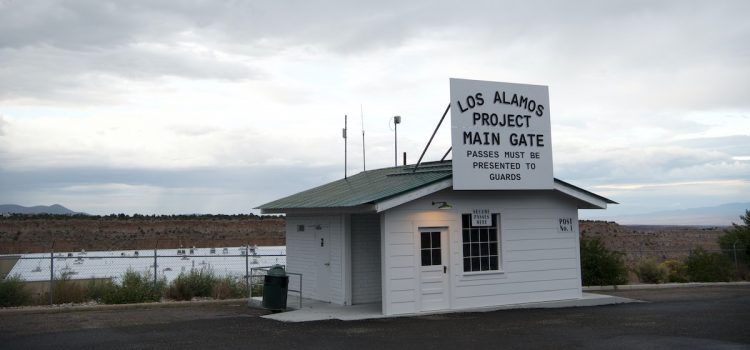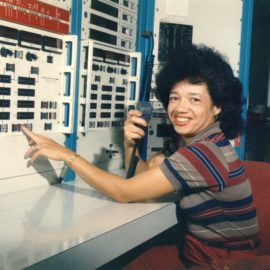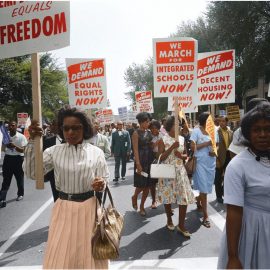

This article is an excerpt from the Shortform book guide to "Surely You're Joking, Mr. Feynman!" by Richard Feynman. Shortform has the world's best summaries and analyses of books you should be reading.
Like this article? Sign up for a free trial here.
How did Richard Feynman irritate the folks in the Los Alamos mail room? Why did he consider it his patriotic duty to break into his colleagues’ file cabinets?
Richard Feynman’s Los Alamos experience blended serious business with enjoyment. This first stop on his professional journey set the pattern for his career. In his memoir, he talks about some of the work he did on the Manhattan Project and shares some of the lighter moments.
Keep reading to learn about Richard Feynman at Los Alamos.
Richard Feynman at Los Alamos
For Richard Feynman, Los Alamos, New Mexico, wasn’t part of the plan. But, after earning his doctorate, he was recruited into the top-secret Manhattan Project team to develop the atomic bomb. In the beginning, he was a low-ranking member of the theoretical physics team whose first assignment was to consult with various engineering groups.
When the scientists arrived at Los Alamos, the facilities were still under construction, so the experimental physics group lent a hand while theoreticians such as Feynman started work in whatever space was available. Despite his Ph.D., Feynman recalls that he wasn’t knowledgeable about nuclear physics, and he felt he had a lot of catching up to do.
Serious Business
The most significant contribution Feynman discusses was his work on the project’s computing machines. Los Alamos was supplied with an assortment of hand calculators and IBM adding machines, which Feynman and other physicists learned to assemble and repair on their own. “Computer programs” were run by a roomful of machines manned by workers who would perform calculations in an assembly line fashion. Feynman recounts that, when he was put in charge of the computing staff, he pleaded for permission to explain to the workers what they were doing and why it was important.
Once he spoke with the workers, their computations increased by a factor of 10, and they came up with innovative ways for the assembly line to work on several problems at once. In a completely analog environment, passing punch cards from one machine to another, Feynman’s crew turned the computing room into an efficient, parallel-processing, problem-solving machine that greatly sped up the calculations needed to advance the development of the bomb.
A Bit of Fun
Feynman admits to being a troublemaker at Los Alamos, and he was always looking for ways to have fun and enjoy life. He recounts several examples of this during his time at Los Alamos.
Mr. & Mrs. Feynman
He didn’t want a roommate in the dormitory, so he made it look like his wife was living there with him (even though she was in the hospital at the time). But, it was a men-only dorm, so the rumors that went up the chain of command caused quite a ruckus.
Irritated by the censorship of the mail he sent and received at Los Alamos, Feynman and his wife started to communicate in code. That drove the mail censors crazy.
Feynman the Safecracker
Prior to his work on the Manhattan Project, Feynman already had a general interest in picking locks as a technical and intellectual exercise. Once he arrived at Los Alamos, however, he discovered that the site had been built in such a rush that all of its documents and sensitive papers were being kept in simple wood filing cabinets that were easily broken into. Feynman says his puzzle-solving compulsion went into overdrive. Not only was he itching to find out how long it would take to break into the project’s top secret files, but he also thought it was his patriotic duty to do so in order to expose the limits of their security.
When cabinets arrived with sturdier locks, Feynman took it as a personal challenge. First, he dismantled his own filing cabinet to understand how it worked. After much trial and error, reminiscent of his childhood tinkering days, he worked out a system to quickly run through every possible locking combination. He also discovered that it was possible to find out what other people’s combinations were if they left their files unlocked. As a result, he made it a habit to collect his colleague’s combinations behind their backs, so that if he needed a file from their office, he could simply break into their cabinet and get it.
Feynman describes how his reputation as a safecracker grew to the point that everyone else assumed he could break into anything, which wasn’t the case (although he was successful more often than not). According to Feynman, the biggest impact of his safecracking skills—besides infuriating his colleagues—wasn’t an increase in overall security but a mandate from on high for all other staff to do a better job of protecting their combination locks from him.
| Would Feynman Have Been a Hacker? Feynman’s attitudes toward the security measures at Los Alamos are analogous to those of modern-day computer hackers. Research has shown that whether computer hackers work on the side of the law or act as criminals, their primary motivation is the intellectual reward of using creative thinking to solve complex problems. Just as Feynman did with cabinet locks, computer hackers build a mental model of the system they’re trying to break into by prodding it from different angles and testing its reaction to different forms of input. Hackers who work on behalf of institutions to uncover their own security weaknesses are referred to as “white hats,” as opposed to criminal “black hats.” Unlike Feynman, who was acting on his own, ethical hackers operate with the consent of their organization and are mindful of the privacy rights of other employees. However, the threats they have to ward off are more widespread, since cybercriminals don’t even have to be in the same country as their target, much less in the same room, as was the case at Los Alamos. |
Feynman the Drummer
Feynman started playing drums in Los Alamos as a way to relax, though he never grew to be as good as a professional musician. Nevertheless, he later grabbed at the chance to play drums for an amateur samba band in Brazil. There, he learned to pretend to be a pro and let his show of confidence carry him along. Feynman says that the fact that his playing wasn’t perfect didn’t matter. What matters is snapping up every chance at joy that life provides.

———End of Preview———
Like what you just read? Read the rest of the world's best book summary and analysis of Richard Feynman's "Surely You're Joking, Mr. Feynman!" at Shortform.
Here's what you'll find in our full Surely You're Joking, Mr. Feynman! summary:
- The memoir of award-winning scientist Richard Feynman
- A walk through Feynman's life, from college to winning the Nobel Prize
- Why enjoying life is just as valuable as your education






